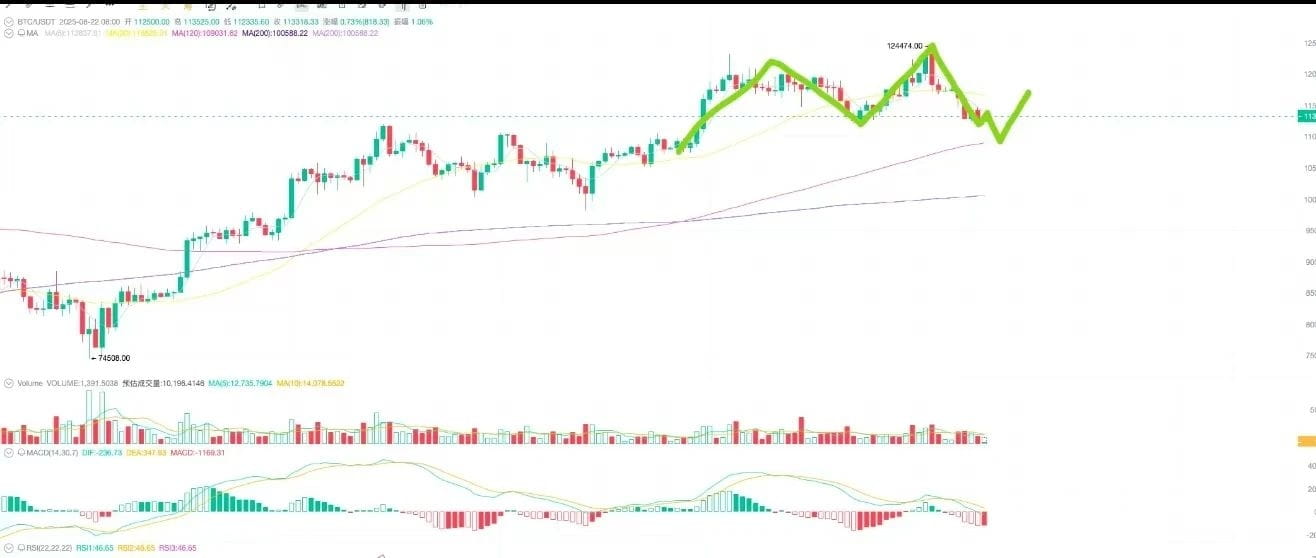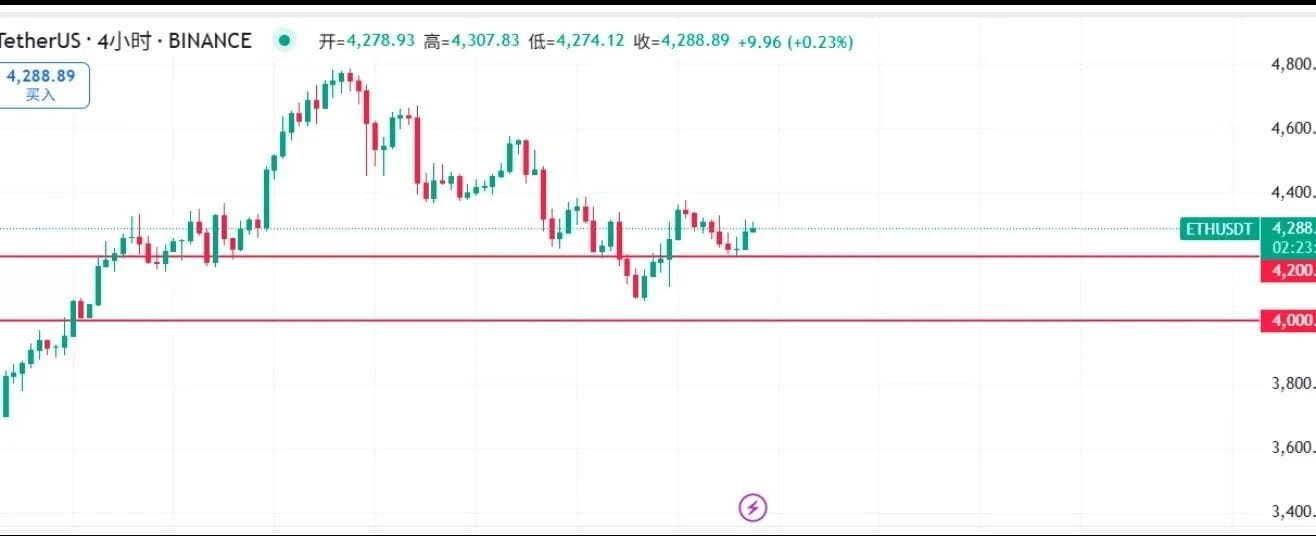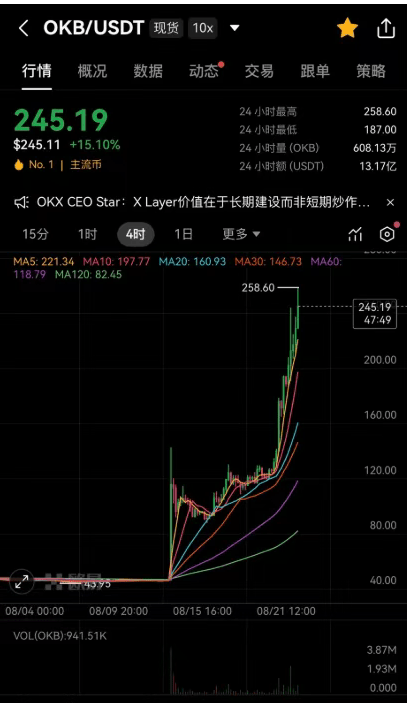Yesterday, Bitcoin and Ethereum once again dipped, with Bitcoin falling to a low of $112,015, hitting a new recent low, while Ethereum dropped to a low of $4,204, with the bottom continually rising. In the last 24 hours, a total of 78,185 people were liquidated globally, with a total liquidation amount of $226 million, including $154 million in long liquidations and $71.82 million in short liquidations.

BTC trend: M top concerns, golden pit opportunities?
Yesterday's expectation was for BTC to rebound to 115,000 and ETH to correct to 4200, but the result was that BTC consolidated around 113,000, and the rebound was slow to gain strength.

If #BTC cannot effectively rebound today, it may form an M top on the daily chart, with expectations heading towards 110,000.
#ETH is currently supported at 4210, but on the 4H level, it is suppressed by MA30. If it cannot break through 4300, it may drop to 4130 in the short term.

From a technical perspective:
4-hour level: Earlier continuous downward movement, with bears dominating; recently, although there has been a 'turn from bearish to bullish', the counterattack has been weak, and the MACD remains negative, indicating continued downward pressure.
Weekly level: The MACD may form a death cross in the next two weeks, with risks of a temporary peak, and some have even started to call for a bear market.
But my view is: Even if a death cross occurs, it is likely to be a large-scale trap for short positions, rather than the end of the bull market.
Why do I still not see bearish signals?
BTC's market cap still accounts for as much as 56%, and it has not yet declined to the risk area of 40. Most mainstream altcoins have not moved much, and market sentiment is not FOMO.
Short positions have accumulated over $3 billion; this piece of meat will not be easily given to the bears, and continuing to drive down to induce shorts is more beneficial for the subsequent peak.
The timing window is not right: The next three months have historically been a period where prices tend to rise. If it does not align with historical patterns, a significant drop may occur unless there are accompanying black swan negative events.
Macro factors remain favorable: The Federal Reserve lowering interest rates is only a matter of time, and Wall Street capital is still buying heavily. Additionally, with spot ETF applications for XRP, SOL, DOGE, and the Ethereum upgrade in November, these are all strong positive signals for the future market.
OKB
According to market data, the current price of OKB is $238.83, with a 24-hour increase of 68.43%. Last night at 21:48, it peaked at $244.3, with a market value exceeding $5 billion. OKB managed to soar from $44 to $258 in just 10 days, completing more than a 6-fold increase.
Many are concerned if OKB has already 'peaked'. So, are there still opportunities for OKB in the future?

We can assess the future trend from several aspects:
1. Supply is capped, and scarcity will exist in the long term.
The official announcement states: The total supply of OKB will not increase, and this is the maximum amount. In the long run, this scarcity will support its 'store of value', similar to Bitcoin.
2. The public chain ecosystem of OKX has just started.
If OKX can successfully operate the X Layer chain and attract more developers and projects, the use cases for OKB will greatly increase, similar to ETH on Ethereum. OKB may not just be an 'exchange token' but a true on-chain base currency.
3. The global cryptocurrency market is recovering, with funds flowing back.
The entire cryptocurrency market is currently in a 'warming-up phase'. If the overall market continues to rise, OKB will also rise accordingly. After all, retail investors have not fully entered the market yet, and many are still observing.
If you are currently considering whether to buy OKB or already own some, here are some suggestions:
1. Do not chase the highs!
If you missed the previous wave of increases and the price is now at a high, do not impulsively chase the highs.
You can wait for it to adjust, for example, if it falls to $100–150, then consider building a position in batches. Don't go all in at once.
2. Focus on medium to long-term, do not trade short-term.
OKB is an asset with long-term value support, but in the short term, it is very volatile, and trading short-term may easily lead to losses.
It is recommended to adopt a 'dollar-cost averaging' approach: buy a little during each dip, and do not rush to sell when the price rises. Control your position size to ensure it does not affect your living expenses.
3. Set stop-loss and take-profit levels to lock in profits.
For example, if it reaches a target price you are satisfied with (like $250), you can consider reducing your position to lock in profits; if it falls below a certain support level (like $120), then stop loss and exit.
Do not hold onto the illusion that 'it will keep rising', and do not stubbornly hold through a downturn.
4. Diversify risks by pairing with other assets.
Don't put all your money into OKB. You can pair it with some BTC, ETH, and stablecoins, so even if OKB experiences fluctuations, it won't be too damaging.
Overall, the short-term trends of Bitcoin and Ethereum remain highly uncertain: on one hand, there is the risk of an M top technically, while on the other hand, macro and funding conditions are still releasing positive signals. The strong rise of OKB undoubtedly ignited market enthusiasm, but high volatility also means risk.
Whether monitoring the key support levels of BTC and ETH or tracking OKB's subsequent performance, investors need to remain calm and patient, avoiding emotional trading. After all, a true bull market often brews amidst fluctuations and hesitation, and golden opportunities for ordinary people often arise during the most chaotic times.


